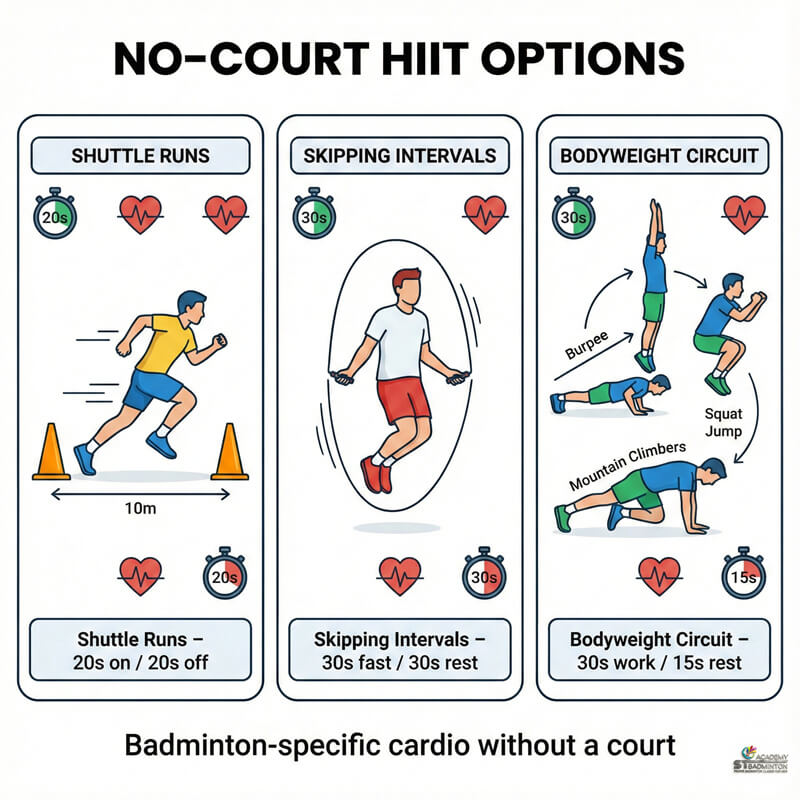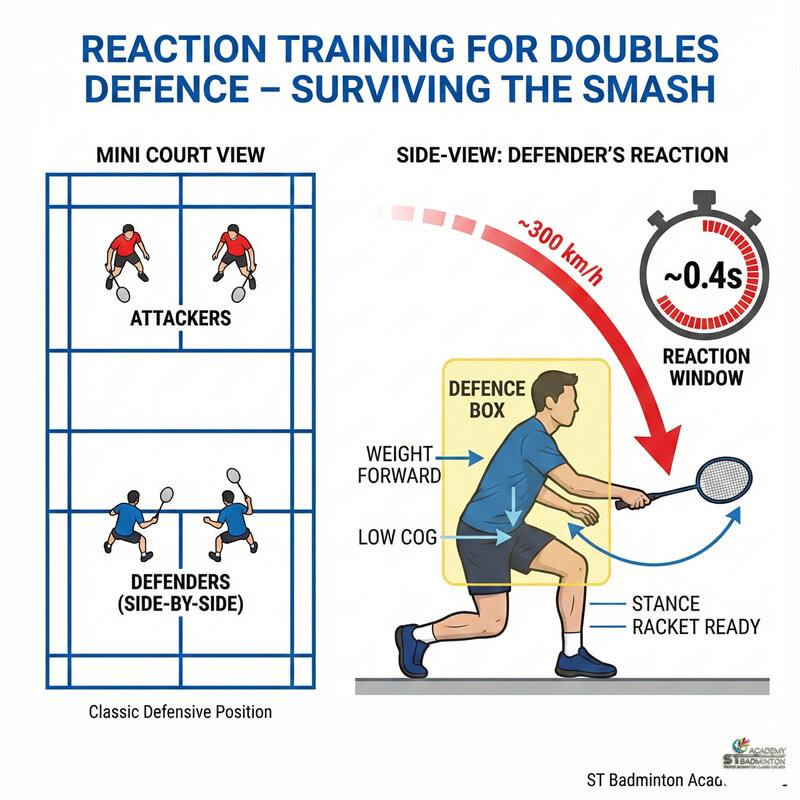Welcome to ST Badminton Academy’s badminton training in Malaysia! I’m a certified badminton performance and training specialist, here to talk about how you can use badminton training to boost your overall athletic performance. Badminton isn’t just a game of skill – it’s also great exercise that will help build strength, speed, agility, and coordination. With the right kind of practice regimen, you can really increase your general athleticism and take your game to the next level. Let me show you how!
Developing Speed And Agility
Badminton is the perfect way to revolutionize your athletic performance. It’s a fast-paced, dynamic game that can help you build power and explosiveness with every swing of the racquet. By honing in on quick reflexes and intense footwork, badminton training provides an opportunity to boost agility as well as overall physical conditioning.
While it may seem like a simple sport on the surface, there are multiple layers at play when delving into its nuances—from mastering defensive strategies to quickly returning shots from all angles. Not only does this serve as an effective form of cardio exercise, but it also aids in developing coordination and balance too.
Enhancing Coordination And Balance
Having established the importance of speed and agility in badminton, we now move on to enhancing coordination and balance. In order to truly perform at a high level, it is essential to have an excellent sense of coordination which will help you react quickly, improve reflexes and heighten focus. There are several ways that this can be achieved through training specific to badminton.
One way is by practicing drills designed to increase your reaction time. This involves performing quick movements when prompted with various visual or auditory cues. As you progress, these cues become faster and more complex; forcing your brain and body to coordinate better in response. Additionally, using multi-directional movement patterns during warm-up sessions helps prepare for action on the court as it encourages proper technique while also stimulating the nervous system for improved responsiveness.
Finally, often overlooked but equally important is balancing exercises like single-leg stands or hopping drills. These not only strengthen stabilizing muscles around joints such as ankles and hips but also give insight into how well-balanced one’s weight distribution is – improving overall posture and control over movements whilst playing badminton.
With all these techniques combined, athletes can vastly enhance their coordination skills necessary for peak performance out on the courts. Increasing muscular strength is then the next logical step toward becoming a champion player…
Increasing Muscular Strength
Badminton training is an effective way to boost overall athletic performance. I’ve been a badminton performance and training specialist for years, so let me share some of my best tips with you.
Exploring nutrition can have a huge effect on your game. Eating properly will help increase strength, speed, and endurance as well as provide the energy needed to power through long practices and games.
Make sure that you are eating balanced meals throughout the day, getting enough protein and carbs to fuel your body while still avoiding unhealthy foods like processed snacks or sugary drinks. Additionally, optimizing rest is essential in order for your muscles to recover from any strenuous workouts or matches. Be sure to get at least 8 hours of sleep each night along with plenty of breaks during practice sessions for optimal results.
Incorporating these two aspects into your daily routine can make all the difference when it comes to increasing muscular strength and agility necessary for success in badminton. With proper nutrition fueling your body and adequate rest allowing recovery time between high-intensity activities, you’ll be able to take your game up a notch! To further improve on this foundation, honing footwork is key…
Improving Footwork
Improving footwork is essential for any athlete to reach the next level of performance. It’s almost like walking on a tightrope; one wrong move can cause your game to crumble and you’ll be back at square one! With badminton training, you can take your athletic performance to unbelievable heights. I’m not exaggerating when I say that mastering this skill will make you unstoppable!
The key techniques in improving your footwork include orienting movements, strategic positioning and quick reactions.
| Key Techniques for Improving Footwork in Badminton |
|---|
| 1. Orienting Movements: React quickly as soon as the shuttlecock is served or smashes against the net, requiring intense focus, agility, and coordination. |
| 2. Strategic Positioning: Find suitable spots on the court where you feel comfortable playing, allowing you to easily get into position once the opponent takes their shot. |
| 3. Quick Reactions: Essential for keeping up with an aggressive player who attacks often. Anticipate their shots while keeping track of their position within the court boundaries. |
Improving footwork involves mastering these key techniques, enhancing agility, focus, and strategic positioning to stay competitive on the badminton court.
With practice and dedication, these skills will become second nature and help improve your overall athleticism immensely. From there, it won’t be long before success comes knocking on your door!
Developing Mental Toughness
One of the most important aspects to improve your badminton performance and overall athletic ability is developing mental toughness. Mental toughness involves honing focus, visualizing success, and building confidence. An effective way to do this is by implementing visualization techniques during practice and before matches which can help you stay focused on the game and picture yourself succeeding when you’re in competitive situations. Not only does it give you a necessary boost of confidence but also helps keep distractions away from your mind as well as preventing overthinking.
Another helpful tool for improving mental toughness whilst playing badminton is having an encouraging support system; whether that be coaches or teammates offering feedback or words of encouragement during training sessions such as “You got this!” Having positive reinforcement will help build mental resilience so any doubts or negative thoughts are quickly replaced with more empowering ones.
Finally, practicing mindfulness is also beneficial to helping cultivate mental strength while playing badminton. Taking time out between points allows players to take deep breaths, refocus their attention back onto the match and reset their emotions allowing them to continue performing at their best level of play.
With these tips in hand, athletes have all they need to start improving their mental strength which leads directly to better overall athletic performance. Improving stamina and endurance requires a different approach, however…
Improving Stamina And Endurance
Having discussed the importance of developing mental toughness for badminton performance, it is also important to focus on physical aspects such as stamina and endurance.
A great way to boost your overall athletic performance is by utilizing nutrition and hydration strategies that provide sustained energy throughout intense training sessions. Consuming complex carbohydrates before a workout can help sustain energy levels so you don’t tire quickly during games or practice drills. Additionally, making sure to stay properly hydrated with electrolytes can go a long way in helping maintain peak conditioning and preventing fatigue.
In order to perform at their best during competition, athletes need to ensure they have sufficient flexibility. Stretching regularly keeps muscles limber which helps reduce potential injuries while playing badminton; this will not only enhance performance but also make participants less prone to injury due to overuse. Developing effective stretching routines are vital in helping badminton players reach their full potential when competing against other teams or opponents. Consider incorporating dynamic warm-ups into daily workouts as well as post-workout cool-downs for maximum benefit from each session.
Now that we’ve covered two key elements for improving athletic performance – mental toughness and stamina/endurance – let’s look at another important factor: using plyometric exercises. Plyometrics involve jumping movements designed to rapidly increase power output capabilities, allowing athletes’ muscles to become more efficient at generating force quickly…
Utilizing Plyometric Exercises
It’s ironic that the same sport which is often seen as a leisure activity to pass the time with can actually be used to improve athletic performance. But here I am, telling you that badminton training can offer an excellent boost to athletes of all levels if done correctly.
Here are some useful tips on how to incorporate badminton exercises into your routine:
| Tips for Incorporating Badminton Exercises Into Your Routine |
|---|
| 1. Target Muscle Groups: Focus on legs, back, and core through intense drills and court coverage to build strength, beneficial for various sports. |
| 2. Body Mechanics: Emphasize footwork, grip, and stroke technique to maximize efficiency during gameplay. |
| 3. Maximize Agility: Perform quick lateral movements across the court to enhance agility and responsiveness. |
| 4. Plyometric Exercises: Incorporate plyometrics like jumping jacks or bounding onto elevated platforms during breaks for added conditioning. |
By incorporating these tips, you can tailor your exercise routine to enhance specific aspects crucial for success in badminton and other sports.
Badminton training translates well beyond just improving a player’s skillset; it provides great benefits toward overall athleticism too! And so now we move towards incorporating cross-training techniques…
Incorporating Cross-Training
I’m a badminton performance and training specialist, and I’d like to share with you how incorporating cross-training into your athletic routine can help boost overall performance. Incorporating badminton drills into your workout will not only enhance concentration but also aid in developing agility. The increased hand-eye coordination as well as the quick lateral movements make for an excellent exercise that targets both physical and mental development.
These exercises include shadow swings or light jogs around the court while carrying a racquet, creating awareness of one’s body movement when swinging at the shuttlecock. Moreover, footwork is essential in executing any offensive or defensive strategies; hence, it is important to practice side shuffles and forward skips with short bursts of speed during warmups.
This helps improve balance, coordination, explosive power, and reaction time which are necessary components needed to excel in sports such as badminton.
Finally, mastering technical skills requires constant repetition and practice so that muscle memory becomes embedded within every swing of the racket. As such, athletes should focus on their form by repeatedly hitting shuttles against walls or using alternate objects such as balloons instead of actual shuttles to build accuracy and precision.
All these activities combined have been proven effective in helping increase overall athletic performance significantly over time. Other than choosing a good racket and also remember to choose the best racket restring in Malaysia.
Frequently Asked Questions

What Are The Potential Risks Of Badminton Training?
Badminton training can be an incredibly rewarding experience, yet it comes with some serious risks if not done correctly. Every stroke and move you make must be executed with complete precision in order to prevent injury. Mental focus is key for badminton performance and training; one wrong step or movement could lead to an epic disaster!
Even the most experienced players will have moments of doubt and uncertainty, so having a game plan that incorporates optimal safety measures is absolutely essential – no exaggeration – when engaging in badminton practice sessions.
What Age Is Appropriate For Badminton Training?
When it comes to badminton training, age is an important factor that should be taken into consideration. Generally speaking, most kids can get started with basic skills as young as 6 years old, but the intensity of exercise and selection of equipment should be tailored to their specific age group. For instance, younger players may benefit from using lighter rackets and slower shuttles in order to ensure proper technique and safety at all times.
On the other hand, older children who are more experienced could begin incorporating higher-intensity drills while using heavier gear. Ultimately, finding the right balance between challenge and fun will help keep your child engaged in physical activity without risking overtraining or injury.
What Is The Best Diet For Badminton Training?
As a badminton performance and training specialist, I’m often asked what the best diet for badminton training is. The truth is that nutrition plays an incredibly important role in any athlete’s success on the court. Just like stretching techniques and drills are essential components of your practice routine, so too is eating well to fuel your body throughout rigorous match play.
Anecdotally speaking, one of my top athletes used increased portions of lean proteins and complex carbohydrates prior to her biggest games with great results! This combination not only gave her more energy but also improved her recovery time between long rallies. So if you’re looking to take your badminton game to the next level, remember – proper nutrition is just as important as drilling those skills.
What Are The Best Shoes For Badminton Training?
When it comes to badminton training, shoe selection is key! Proper form and technique begin with a good foundation from the ground up. You want to make sure you select shoes that are lightweight, comfortable, and provide plenty of support for your feet so you can move quickly and comfortably on the court.
Make sure they have enough cushioning to protect your joints as well – this will help minimize any strain or injuries while you train. If possible, try out different types of shoes before committing to one pair – it’ll give you an idea of which ones feel best when playing badminton.
How Often Should Badminton Training Be Done?
When it comes to badminton training, frequency is key. The best way to get the most out of your workouts is to work on speed drills and core strength exercises at least three times a week. This will help you develop an all-round athletic performance that can be used in other sports too. Additionally, taking time off after each session allows your body to rest and repair so you’re ready for the next one!
Learn Athletic Performance in Badminton Training Malaysia
Badminton training is an excellent way to boost your overall athletic performance. As with any sport, however, it’s important to understand the risks associated with badminton and know when you are ready to begin training.
Having the right kind of diet and shoes can also help ensure that you get the most out of each session. Finally, scheduling regular sessions is key for improving technique and mastering the game. With these tips in mind, anyone can use badminton training to become a better athlete!
At the end of the day, no matter how experienced or inexperienced you may be at badminton, proper dedication and focus will always be paramount for achieving peak performance. So if you want to take your athleticism up a notch, start embracing badminton today!





